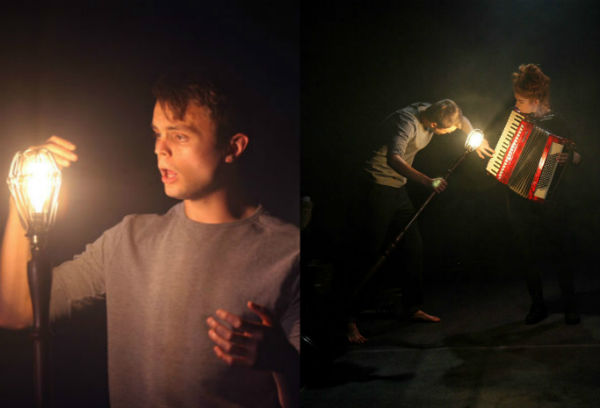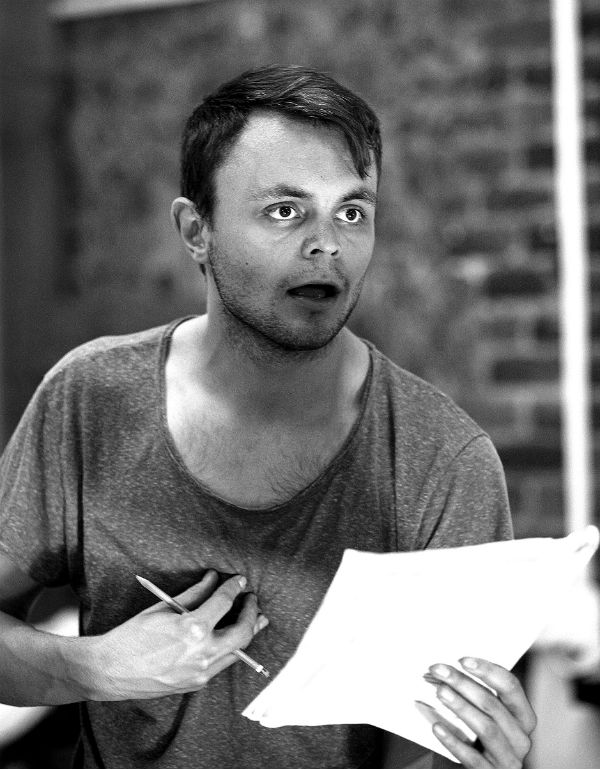What it is to be Human
We all know the story of Frankenstein, don’t we? At least, we think we do, even though many of us have never actually read it. We’ve probably seen plenty of film adaptations and we can all conjure up the image of Boris Karloff lumbering around in an ill-fitting suit with bolts through his neck. Which is not a million miles from where writer Tristan Bernays and director Eleanor Rhode were coming from when they threw all that out of the window and each burrowed into Mary Shelley’s often rambling, sub-plot-ridden novel to unearth what really excited them about it.
They soon found that they were of the same mind, underlining the same passages - unsurprisingly, as they have collaborated closely and to Offie-Award-winning effect before, with Teddy at Southwark playhouse. Their strong connection and shared artistic vision have sparked an interpretation of Frankenstein like no other.
Stripped back to the bare bones in every way, this production allows audiences’ imaginations to go to work and builds atmosphere, layer upon layer. We see a cast of only two, George Fletcher playing both Frankenstein and Creature, and Rowena Lennon in the role of Chorus, observing, highlighting and reflecting the characters’ thoughts and actions through sound and music. The world presented on-stage is barely dressed yet richly furnished by sound designer David Gregory, blending natural and electronic, music and ambient noise, to create an absorbing soundscape, made all the more magical by Lawrence T Doyle’s almost hypnotic lighting.

This is Creature’s world where, for Eleanor and Tristan, the beating and, ultimately, broken heart of the story lies. We see him as an innocent child, yet in a full-grown, monstrous body that he doesn’t understand how to use. He is struggling to develop and survive but without the love, protection and nurturing that a child needs. Eleanor was particularly fascinated by his schooling, courtesy of the blind man, in the works of Milton, Plutarch and Werther and the way that part of the story ‘really forces you to stop and think, of all the things that you’ve learnt over a course of a lifetime and how you take those things for granted’.
Movement Director, Tom Jackson Greaves, took George back to the very basics to examine the physicality of a child’s incremental control over muscles and cognition and development of awareness, movement, dexterity and language. The result is a unique interpretation and we’ll leave it for you to wonder how they handle the scene where both Creature and Frankenstein meet and to be captivated by what you see when they do.

George Fletcher in rehearsal
Mary Shelley was only 19 when she wrote the book. The story was concocted merely to amuse and impress Percy Shelley, Lord Byron and other guests during a stay near Lake Geneva when what she described as the ‘ungenial’ summer of 1816 confined them indoors to entertain each other with scary tales. She did not originally intend it to be a great novel but it grew into a story that is destined to resonate through time. As Tristan Bernays puts it, Frankenstein is about ‘the dangers of science, parental responsibility, Good and Evil, the question of what it actually is to be human. These are massive universal themes in a story that will always be relevant and will always speak to people'.
If only Mary Shelly could see this extraordinary re-imagining of her work - what would she make of it?
Frankenstein runs 7th to 18th March and you can book tickets here.
Photography by Philip Tull
